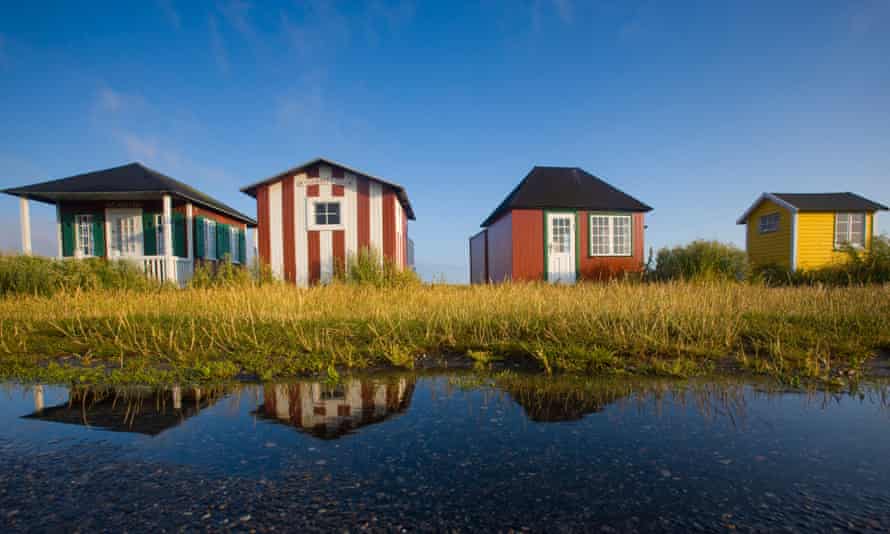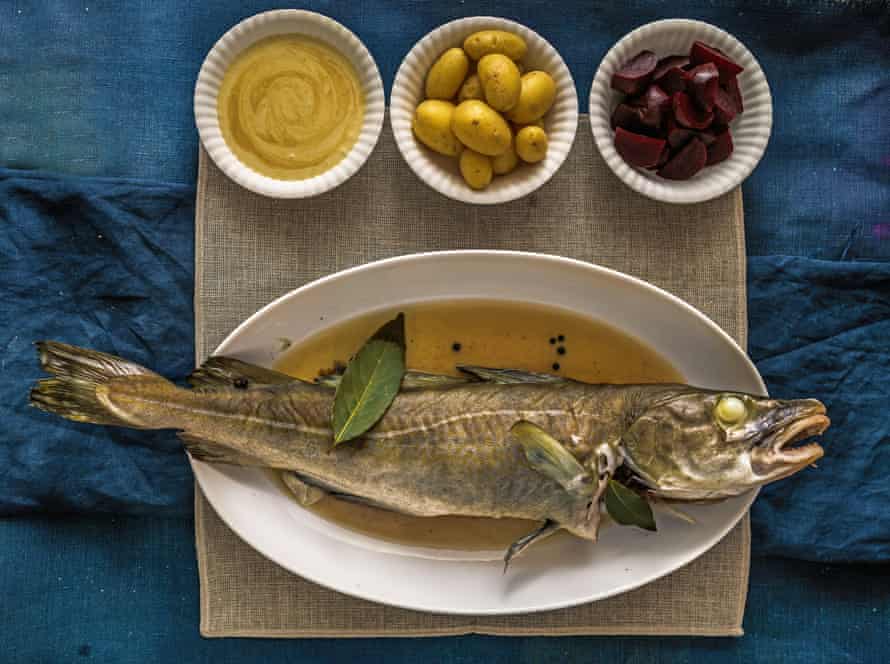Ærø is a small island in southern Denmark. To get there you need to take a ferry from Svendborg. I have boarded that ferry many times – I always feel a sense of belonging. My father comes from Ærø. And I have fond memories from when my grandfather, called farfar, was alive and I would visit him. The ferry takes you to Ærøskøbing – a quaint town with cobbled streets and tiny old houses in lots of different colours. When I arrive, I am immediately transported into another world, where time seems different.
Ærø represents my family’s history, which is very much linked to food, both everyday eating and celebrations. As a little girl I would often spend New Year’s Eve with my farfar. One year I was snowed in when visiting for Christmas: the sea was frozen solid between Ærø and the main island of Funen, and nobody could get off. To celebrate New Year’s Eve, we went for dinner at my Aunt Sarah’s house. Every year she would serve cod with mustard sauce and a range of accompaniments. I will never forget the first time I was introduced to this traditional dinner.

The whole atmosphere felt special: the quietness in the dining room; the table set with beautiful white linen, Royal Copenhagen china and crystal glasses; the way my aunt carried in the big serving platter with the whole boiled cod, head and tail, and placed it at the centre of the table.
Aunt Sarah had almost black hair and dark eyes. She gathered family and friends around her, and I liked to be near her. I knew from early on that she was the one with knowledge, that she could cook.
I remember not saying anything, just savouring the moment with the silky pieces of cod and warm, smooth sauce on my plate, while all the little bowls with bacon, beets, horseradish and egg were passed around. We waited for the moment; nobody ate before my aunt said: velbekommen.
I remember walking home later with my farfar through a wintry Ærøskøping, spellbound after that wonderful meal, footsteps muffled by the squeaky snow under our feet.
I still visit Ærø in the winter: I cook, read books and go for long walks. The place seems empty – all the action is inside the kitchens.
I drive to a nearby harbour and buy fish directly from a fishing boat, then make all the condiments and the old-school sauce. The dish sums up Danish winter produce: cod, beetroot, spinach, pork, eggs and the two most important spices in our cooking: horseradish and mustard.
This dish connects me to Ærø and my ancestors, and since that new year celebration, my deep love for cod has never left me.

Boiled cod with mustard sauce
Serves 4
800g potatoes
800g cod fillet or loin
Salt and freshly ground pepper
2 tbsp finely chopped parsley
Accompaniments
1kg winter spinach
4 eggs
100g of bacon, cut into small cubes
100g pickled beetroots
4 tbsp freshly grated horseradish
For the mustard sauce
30g butter
3 tbsp flour
300ml fish broth (from the cod) or water
3 tbsp wholegrain mustard
100ml heavy cream
Boil the potatoes and keep them warm. Rinse the spinach thoroughly and have ready to steam. Boil the eggs, then chop them roughly, fry the bacon until crisp, and cut the beetroot into very small cubes.
Place the cod in a saucepan with 300ml water and sprinkle with salt and pepper. Bring to boil then simmer for about five minutes.
When everything is ready, prepare the sauce. Melt the butter in a small saucepan, then add the flour and stir until it becomes a smooth paste. Add the fish broth a little at the time, stirring until all the lumps are gone. Add the mustard and cream, stir again until the sauce is smooth, and season with salt and pepper. Now wilt the spinach in a separate pan until it collapses.
Serve the cod on a big platter sprinkled with the chopped parsley. Put the spinach, eggs, bacon, beetroot, horseradish and mustard sauce in little dishes and serve on the side with the potatoes.
• Chef and food writer Trine Hahnemann runs Hahnemann’s Køkken, a bakery, shop and cookery school in Copenhagen. Her latest book is Scandinavian Green (Quadrille), available at the Guardian Bookshop for £22.62




